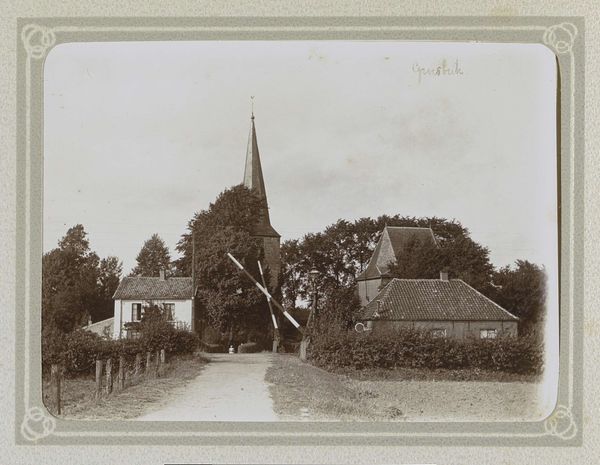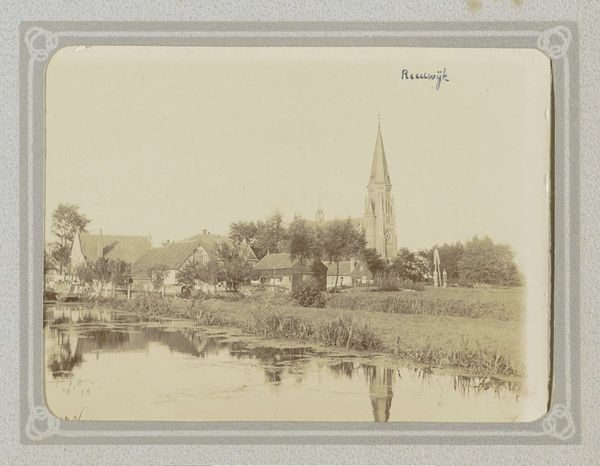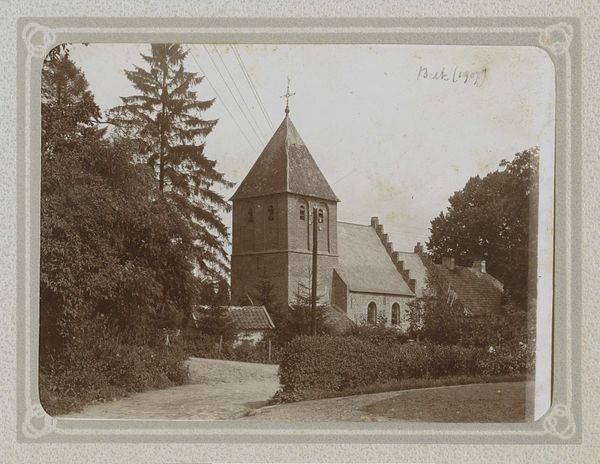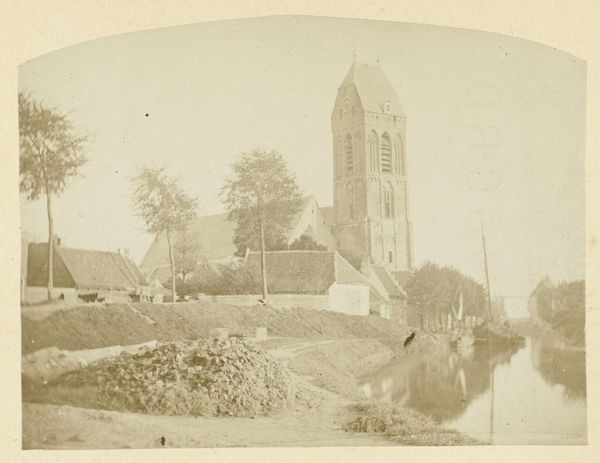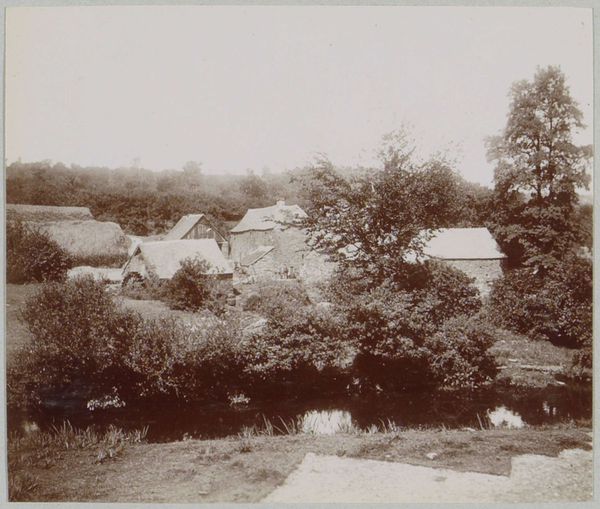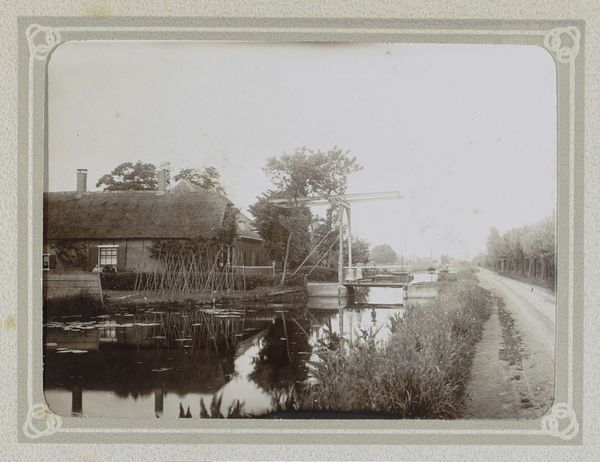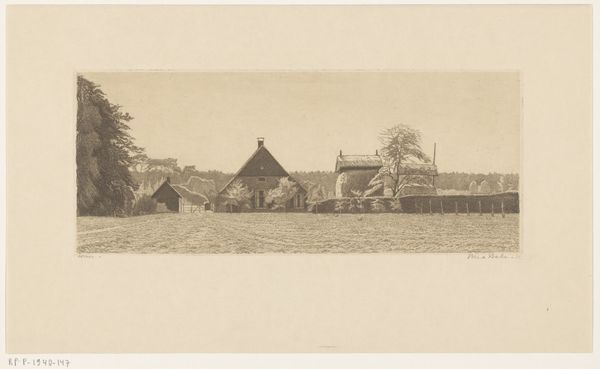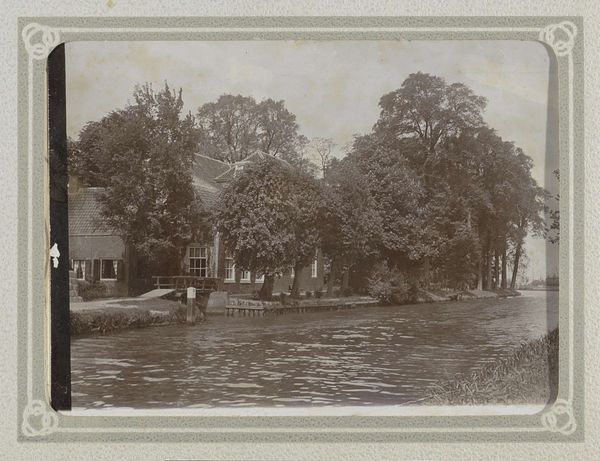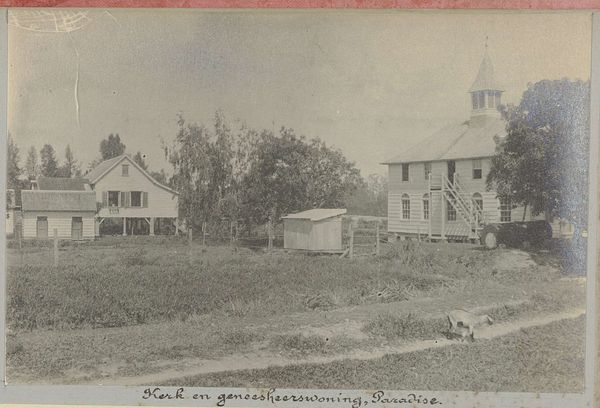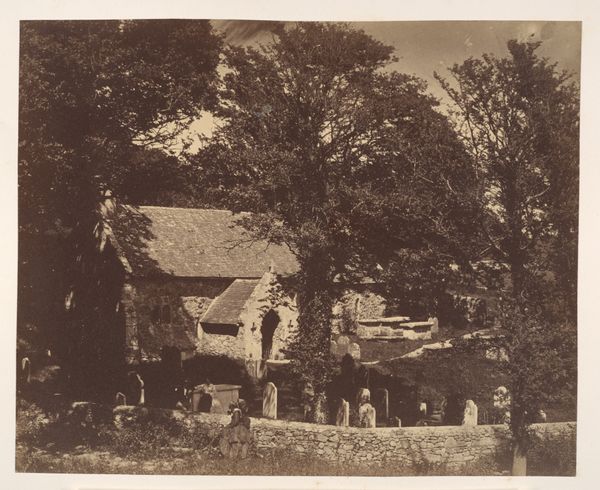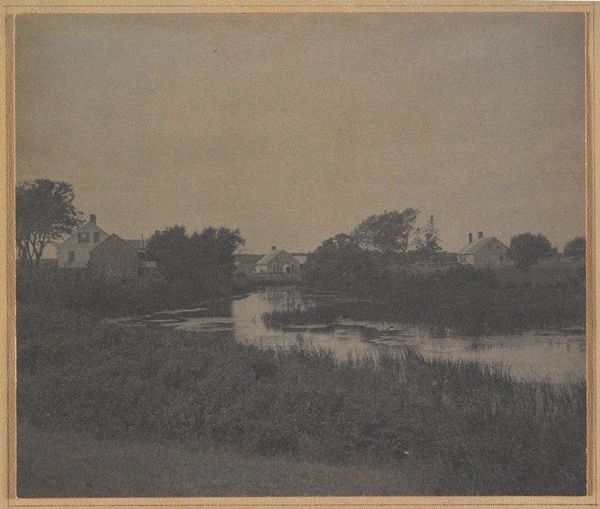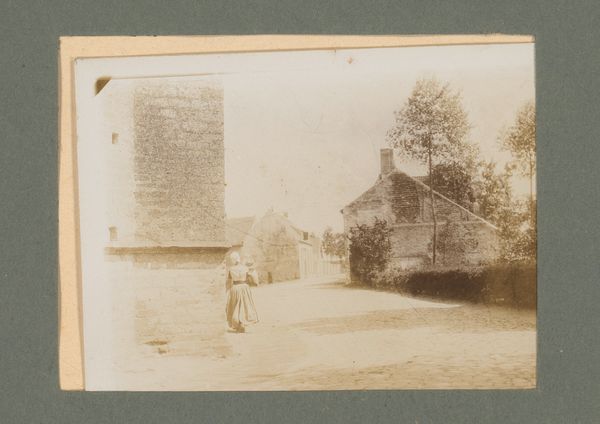
Gezicht op huizen, de kerk en een brug over een sloot in Terzool c. 1905 - 1907
0:00
0:00
plein-air, photography
#
plein-air
#
landscape
#
photography
#
cityscape
#
realism
Dimensions: height 81 mm, width 110 mm
Copyright: Rijks Museum: Open Domain
Curator: Welcome. Before us hangs Folkert Idzes de Jong’s photographic print, "Gezicht op huizen, de kerk en een brug over een sloot in Terzool," dating from around 1905 to 1907. It offers a view of houses, a church, and a bridge spanning a ditch in Terzool. Editor: Immediately, I’m struck by the stillness, a kind of hushed reverence in this seemingly simple landscape. It feels very Dutch, very…grounded. I can almost smell the damp earth. Curator: The realism here isn’t just about depicting a place, but also conveying a particular moment in time and societal development. Think about early 20th century Netherlands—industrialization was creeping in, and photographs like these arguably documented a way of life that was already changing. Editor: It’s melancholic, though, right? This village feels self-contained, a world unto itself. But the photographic process, it makes me wonder, did the artist see something we don’t, some omen of transformation? It reminds me of old family portraits. There is a gravity about the monochrome image. Curator: Absolutely. And consider the artistic choices, perhaps a nod to the aesthetic standards of his time. The composition adheres to landscape conventions, inviting the viewer to contemplate the relationship between community and land. The bridge, the church tower – each contributes to a silent, intersectional narrative about social identity, beliefs and progress. Editor: I fixate on the bridge. It's sturdy yet somehow delicate. Does it signify connection? Division? I'm probably over-romanticizing. Perhaps it just illustrates… practicality? A need to navigate. Also, there is no people. It is only architectural environment Curator: Perhaps. The absence of people itself speaks volumes about how rural society has been historically represented—often idealistically, stripped of the complexities of human interaction. Editor: I still see that little shimmer in the ditch and consider this photographic choice by the photographer to depict the simplicity, the common environment for what it really is. No enhancements, no people to make the moment dramatic. Just life! I'm sure this reflects the community of this town to this day. Curator: So, considering it through our contemporary lens, de Jong’s photograph challenges us to explore the intertwined historical contexts that continue to inform cultural identity. Editor: Precisely. I find a profound, almost spiritual element lurking in the simplicity of a ditch reflecting a church tower! Thanks for opening up the background context, its intersectional narrative truly enriched the whole work!
Comments
No comments
Be the first to comment and join the conversation on the ultimate creative platform.

